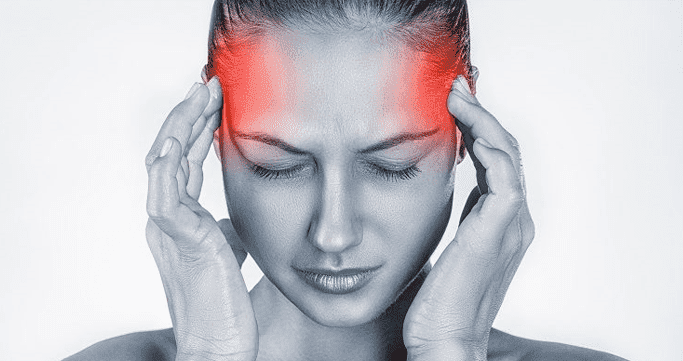Everyone gets a headache from time to time, sometimes caused by fatigue, stress, illness or trauma. But chronic headache that persists over time should not be ignored. It can indicate structural or mechanical issues that can lead to more serious symptoms down the road.
Cervicogenic headache does not originate in the head, but rather in the third occipital nerve that runs between the second and third cervical vertebra. It is a common site for trauma related injury like whiplash, where the neck hinges forward and back with excessive force, causing inflammation and putting pressure on the nerve.
Cervicogenic headache may also be caused by weak muscles, poor posture and harmful habits like excessive texting, which forces the head forward from the center of the shoulders, increasing its relative weight by two to four times, and placing stress on the neck (a condition called Text Neck). Forward head posture places strain on the muscles, ligaments, discs and joints of your neck, causing inflammation and irritating the nerves in your neck and head.
A cervicogenic headache differs from a migraine or cluster headache in that it does not involve nausea or sensitivity to light and sound. Some of the symptoms of cervicogenic headache include:
- One-sided head or facial pain
- Pain in the back of the head, temples or behind the eyes that stays in one spot
- Headache pain that remains moderate to severe
- Pain that lasts from hours to days
- Deep pain without throbbing
- Pain triggered by neck movement, coughing, sneezing, texting or other movements that place pressure on the neck
- Stiff neck with limited range of motion
There are a few simple strategies that may help relieve cervicogenic headache pain:
- Apply ice to the upper neck and take NSAIDs to reduce inflammation
- Refrain from activities that force your head forward from your shoulders, like texting
- Make a conscious effort to sit erect with good posture when driving, watching TV, reading or working on the computer
- Stay away from activities that put excessive stress on your neck, like headstands and some yoga postures
- Engage in a regular balanced exercise program that promotes good spinal alignment and strengthens the muscles that support your head and neck
Chiropractic adjustments and physical therapy may also help alleviate cervicogenic headaches and reduce damage and inflammation in the area around the third occipital nerve.


























































